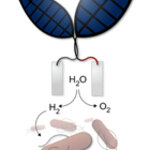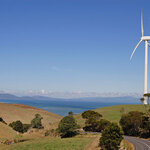Energy

Planning permission has been given for what could become the world’s largest offshore wind farm on the Dogger Bank, off England’s east coast.
If fully constructed, the project will have up to 400 turbines with a total generation capacity of 2.4 GW. That’s enough to power 1.9 million households – more than Manchester and Birmingham combined.
So why now? And why so big? It seems the UK government is essentially taking a punt on the future of offshore wind. Investment in a more expensive renewable technology at an earlier stage means a premium is being paid in the hope it will kick-start a…

The search for alternative energy sources in the age of climate change has overlooked tidal energy: a vast and unexploited worldwide resource.
For three decades now, tidal lagoon schemes have been recommended as an economically and environmentally attractive alternative to tidal barrages. More recently, two proposals for tidal lagoons in Swansea Bay, Wales have emerged and there have been several reports documenting how such a project there could have the potential to harness significant energy resources.
Tidal energy involves constructing a barrage, a dam or some other sort of barrier to…

Walmart, Costco and other 'big box stores' or facilities like hospitals could use a fuel cell that runs off the natural gas that already flows in pipelines below city streets and eliminate the electricity 'middle man', which is good for the environment.
Instead of drawing electricity from the power grid, that often ends up being converted from coal, natural gas or nuclear power, facilities could instead go direct and use natural gas-powered solid oxide fuel cells. It would lower their electric costs, increase power reliability and reduce greenhouse gas emissions, according to a…

From light-up shoes to smart watches, wearable electronics are gaining traction among consumers, but these gadgets' versatility is still held back by the stiff, short-lived batteries that are required. These limitations, however, could soon be overcome. In the journal ACS Nano, scientists report the first durable, flexible cloth that harnesses human motion to generate energy.
It can also self-charge batteries or supercapacitors without an external power source and make new commercial and medical applications possible.
Sang-Woo Kim and colleagues point out that the potential of wearable…

Thorium has its advantages over uranium nuclear power, but is it right for Australia? Credit: dymidziuk.janusz, CC BY-NC-SA
Australia has developed something of an allergic reaction to any mention of uranium or nuclear energy. Blessed as we are with abundant reserves of coal, oil and gas, we have never had to ask the hard questions many other nations have had to ask – questions the answer to which has been “nuclear” for many of those nations.
Yet with the looming spectre of climate change and greater calls for a shift away from fossil fuels, nuclear power is once again on the agenda. The…

Sewage sludge, green waste, even animal excrement can be utilized for energy recovery with the biobattery modular concept.
Biogas plants are an important element for decentralized energy supply. They produce electricity from renewable resources and can compensate for highly fluctuating wind and solar energy. There are already 8,000 plants in operation in Germany with an electrical output of 3.75 gigawatts in total, that is the equivalent to roughly three nuclear power plants. However, the plants have several disadvantages too: they only process a limited range of organic…

Stockholm is considered the world's most sunlight-deprived capital - in November of 2014 the Swedes living there had just a few hours of the stuff and in winter months, it will get dark at 3 PM anyway, so if the sun is hidden by clouds, it can be a real downer.
Yet not everywhere in Sweden is so bleak. Because there are so few solar laboratories in the world, KTH Royal Institute of Technology reasoned that Stockholm was the perfect place to build one and in there, the future is bright 24 hours a day.
It officially opens this week, and is a tribute to modern engineering, but solar…

Harvesting sunlight is old technology for plants but it's a level of efficiency in solar energy we would love to be within a billion years of - artificial photosynthesis is needed if we want to go beyond the energy density of things like combustion engines.
Solar energy, using electricity from photovoltaic cells to yield hydrogen that can be later used in fuel cells, would be terrific but has technological obstacles. Now scientists have created a system that uses bacteria to convert solar energy into a liquid fuel. Their work integrates an "artificial leaf," which uses a catalyst…

Electric cars are fine for people who have another car as a back-up or who only make short trips or who are not afraid of a little charge rage in the office parking lot.
For everyone else, electric cars only work if they are heavily subsidized.
To become mainstream, and not just toys for elites like a Tesla, batteries need to get battery or they need to be leased. Otherwise, they remain in the realm of well-connected CEOs who get gigantic government subsidies to set up shop - like Tesla.
According to the authors, of a new paper in Manufacturing and Service Operations…

The debate over wind turbines is heated, so it's best to rely on solid science. Fir0002/Flagstaffotos/Wikimedia Commons, CC BY-NC
By Jacqui Hoepner, Australian National University and Will J Grant, Australian National University
Yesterday, The Australian ran a front-page article about what it called a “groundbreaking” new study on wind turbines and their associated health impacts.
The study supposedly found a trend between participants’ perceived “sensations” and “offending sound pressure”.
The Australian’s environment editor Graham Lloyd claimed the (non-peer-reviewed) study shows that “…